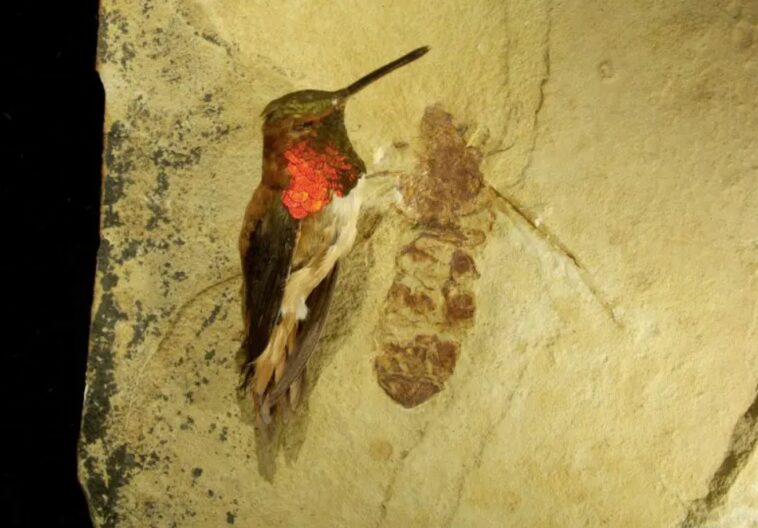In the world of paleontology, new discoveries often shed light on the fascinating history of Earth’s ancient creatures. One such discovery occurred in Wyoming, where researchers unearthed a gigantic ant fossil of a winged queen Titanomyrma lubei, dating back 49.5 million years. This extraordinary find is the first fossil of a giant ant found in the Western Hemisphere and raises interesting questions about the existence of these colossal insects in the past.
Until this discovery, fossils of giant ants had been limited to wing fragments found in the United States, but never a full-body specimen. Measuring a size comparable to that of hummingbirds, this ancient queen ant offers valuable insights into the life and environment of Titanomyrma, which once roamed the Earth’s surface during the Eocene epoch. The finding has captured the imagination of scientists and researchers, sparking curiosity into the behavior and migratory patterns of these enormous insects.
The Titanomyrma fossil was discovered over a decade ago by Simon Fraser University paleontologist Bruce Archibald and collaborators at the Denver Museum. The research team has been working diligently to explore the implications of this discovery, provoking questions about ancient Arctic migrations and the ecosystems that these gigantic ants inhabited. As new information continues to surface, our understanding of this impressive species grows, shedding light on the intricate, interconnected history of our planet’s flora and fauna.
Comparison to Other Ant Fossils
The discovery of the Titanomyrma fossil in Wyoming is significant, as it is the first body of a giant ant found in the Western Hemisphere. Previously, only fossils of loose giant ant wings had been found in the United States. The Titanomyrma queen ant fossil had a wingspan of 6 inches, making it comparable in size to a hummingbird.
Compared to other ant fossils, the Titanomyrma stands out not only for its size but also for the implications it has on our understanding of ancient migrations. The presence of this giant ant in North America raises questions about ancient Arctic migrations and the connections between different ecosystems.
Other known ant fossils include specimens from the Eocene epoch, such as Sphecomyrma freyi, which is believed to be one of the earliest known ants. Sphecomyrma freyi, however, is much smaller in size compared to the Titanomyrma queen ant.
Ultimately, the discovery of the Titanomyrma ant fossil in Wyoming has shone new light on these giant insects, offering a wealth of potential research questions and opportunities for future exploration. As more information is gathered, we may come to better understand the lives, ecology, and mysterious migrations of these ancient ants.
- Online rock and mineral club for collectors of all levels!
- Find community with like-minded rock and mineral enthusiasts.
- Monthly Giveaways!
- Free Access to Entire Digital Library of Products (current and future products)*



